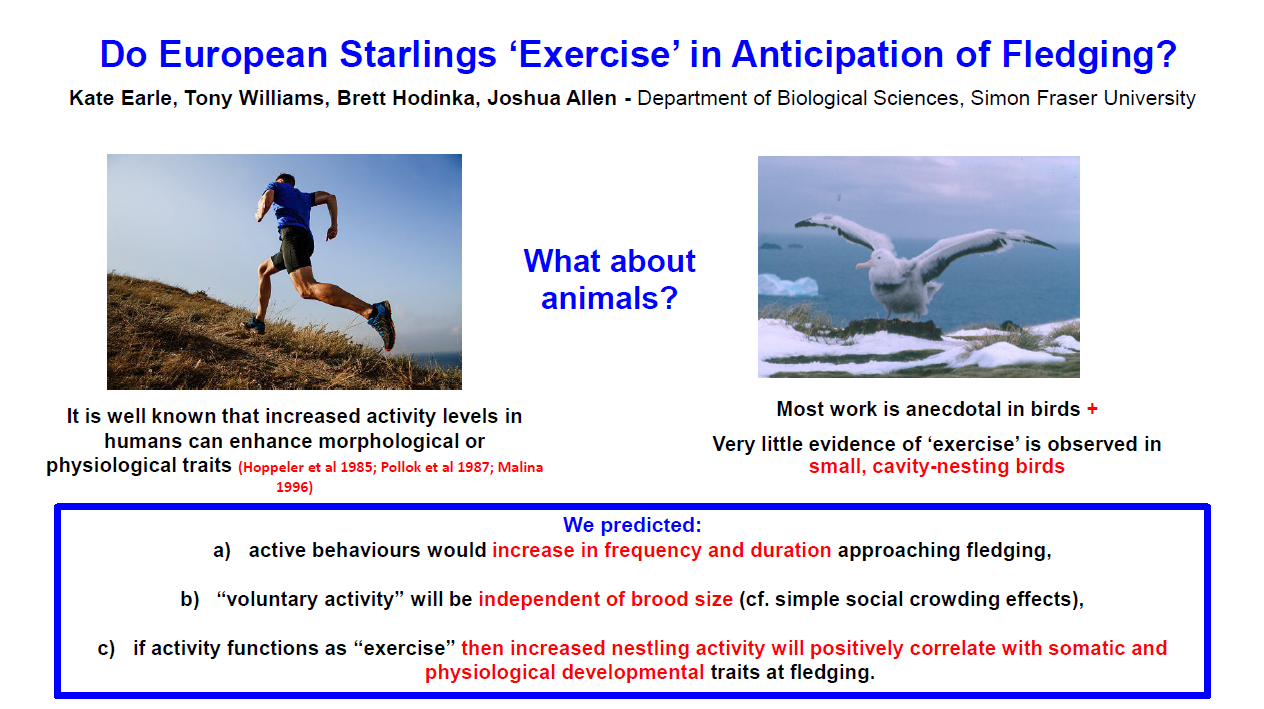Do European Starlings “Exercise” in Anticipation of Fledging?
Main Article Content
Abstract
Humans benefit from physical exercise (e.g. increasing aerobic capacity) in anticipation of increased physical effort or workload (e.g. running a marathon). Given that free-living animals face similar rapid transitions in workload, do they also exercise? Here we predicted that nestling European starlings (Sturnus vulgaris) would utilize activity in the nest (as a form of “voluntary exercise”?) in anticipation of the increase in workload (i.e. onset of active flight) associated with the rapid transition from sedentary nestling to volant, active fledgling. We recorded nestling behaviour for 5 days prior to fledging (days 16-20) including a)” active behaviours”, e.g. wing flapping and stretching, walking and jumping, and b) “passive behaviours” e.g. sitting, standing, and perching. Additionally, we measured somatic developmental traits (mass, wing, tarsus) and obtained blood samples from the nestlings one day before their predicted fledge date to assess physiological development. We predicted that a) active behaviours would increase in frequency and duration approaching fledging, b) that if this reflected “voluntary activity” it would be independent of brood size (cf. simple social crowding effects which should correlate with brood size), and c) that, if activity functions as “exercise” then increased nestling activity will positively correlate with somatic and physiological developmental traits at fledging.
Article Details

This work is licensed under a Creative Commons Attribution-NonCommercial-NoDerivatives 4.0 International License.

